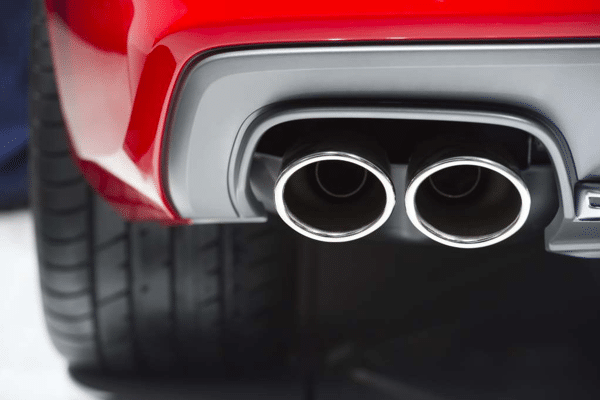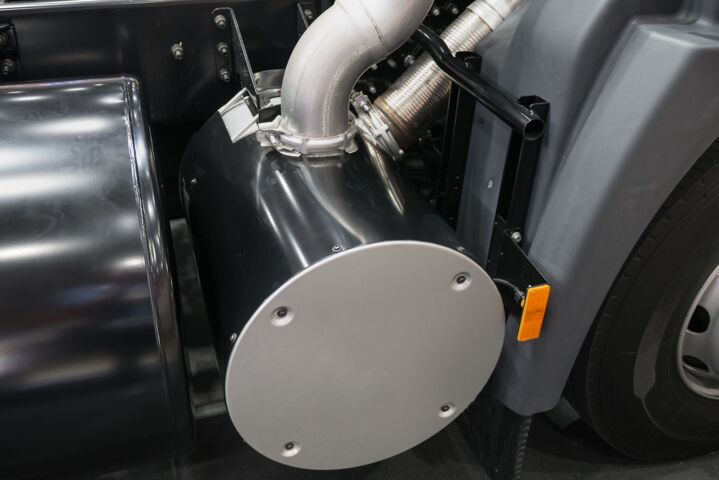
Everything You Need to Know About the Euro 7 Stand...
The impact of the new Euro 7 standard is significant. In this knowledge article you can read everything you need to know about the new Euro 7 standard and the role of lubri...
11 septembre 2023

In this knowledge article, you will find everything you need to know about the new Euro 7 standard and the major differences from the Euro 6 standard.
Recently, there have been significant developments regarding the Euro 7 emission standards for passenger cars, light commercial vehicles, and heavy-duty commercial vehicles. Read the new article here for an update on these developments and how they relate to the information shared in the article below.
Heavy Duty (HD) vehicles are specified as "vehicles with more than 8 seats or goods transport vehicles with a payload capacity of more than 3.5 tons," also known as heavy-duty commercial vehicles. For heavy-duty commercial vehicles, stricter limits apply compared to light duty. Type approvals issued to cars and light commercial vehicles from July 2025 must comply with the Euro 7 emission standards, but for heavy-duty commercial vehicles, this applies only from July 2027.
A major difference with Euro 6 for heavy-duty commercial vehicles is the testing method. Large and heavy engines were tested and monitored for emissions using test benches, but the Euro 7 standard dictates 'in-vehicle' tests, in short: the engines must meet the limits when they are in the vehicle, the so-called RDE (Real world Driving Emissions) tests.
For Heavy Duty, there are 'On Board Monitoring conditions', just as with light-duty vehicles. This means that the distance or age for which the heavy-duty commercial vehicles must meet their emission limits has increased. A distinction is made in the following vehicle definitions:
• N2: goods transport vehicles with a payload of more than 3.5 tons but up to 12 tons
• N3 <16 tons: goods transport vehicles with a payload of more than 12 tons but up to 16 tons
• N3 >16 tons: goods transport vehicles with a payload of more than 16 tons
• M3 <7.5 tons: passenger transport vehicles with a payload of more than 3.5 tons but up to 7.5 tons
• M3 >7.5 tons: passenger transport vehicles with a payload of more than 7.5 tons
N2, N3 <16t, and M3 <7.5t vehicles had to meet the Euro 6 standard emission limits for 300,000 km or 6 years; in the Euro 7 standard, these vehicles must meet the emission limits for 375,000 km or 8 years. N3 >16t and M3 <7.5t vehicles had to meet the Euro 6 standard emission limits for 700,000 km or 7 years; in the Euro 7 standard, this is 875,000 km or 15 years.
For heavy duty, it is required that the emissions be fully monitored during the defined 'lifetime' by the vehicle itself and that checks are carried out on the limits.
For the Euro 7 standard in heavy-duty vehicles, the focus is mainly on NOx, on PN10 and NH3, but also on dinitrogen monoxide (N2O), organic gases other than methane (NMOG), and formaldehyde. These limits are measured in three situations: in cold engine situation, in warmed-up engine situation (both measured in mg/kWh), and for short trips (less than 3 WHTC, which stands for World Harmonised Transit Cycles). The latter limits are recorded in mg/trip; see the graph below for a complete overview of the figures.
| Test | NOx | PM | PN10 | CO | NMOG | NH32 | CH4 | N20 | CH2O | |
| Cold emission (mg/kWh) Test | 350 | 12 | 5×1011 | 3500 | 200 | 65 | 500 | 160 | 30 | |
| Warm emission (mg/kWh) | 90 | 8 | 2×1011 | 200 | 50 | 65 | 350 | 100 | 30 | |
| Trips <3km WHTC length (mg/trip) | 150 | 10 | 3×1012 | 2700 | 75 | 70 | 500 | 140 | / | |
| NOx | Nitrogen oxide |
| PM | Particle mass |
| PN10 | Carbon monoxide |
| CO | Koolmonoxide |
| NMOG | Organic gases other than methane |
| NH3 | Ammonia |
| CH4 | Methane |
| N20 | Dinitrogen monoxide |
| CH2O | Formaldehyde |
To meet and continue to meet the set limits during the defined lifespan, the use of the right lubricants and fuels becomes very important. Several challenges await lubricants and fuels in Euro 7 vehicles. Research indicates that lubricants with relatively high or medium SAPS values (sulfur and phosphorus chemistry, used for wear protection) primarily generate particles in the critical PN10 to PN23 range during combustion. These particles cause the fine mesh pores of the filters in the exhaust system to slowly clog, which in turn leads to higher back pressure. Higher back pressure results in more resistance and thus higher fuel consumption, read: higher emissions. In addition to attention to particulate matter, there is certainly also attention to reducing friction, to keep the internal resistance in the engine as low as possible.
The use of high-quality fuels plays a more important role in meeting and continuing to meet the standards. Contamination in the combustion chamber or at the injector changes the injection patterns, leading to incomplete combustion and further pollution. Research shows that injector contaminations affect emissions. Because less fuel can be injected at the same time, the engine computer will make the injection time longer. Extending injection times by 20% results in four times as many particles being emitted.
When pollution occurs, for example, through the use of incorrect lubricants and low-quality fuels, the required standards are no longer met, which is detected by sensors. If a deviation is detected, it must be identified and rectified. If this is not done, one is liable to prosecution, and the vehicle will not pass the periodic inspection. Pollution can also lead to potentially high costs because sensitive sensors can be damaged and need to be replaced. It is becoming increasingly important to select the right consumption and maintenance products. Eurol closely monitors developments for you and develops products that are compatible with Euro 7 vehicles. This also applies to the potential use of top-up additives to clean the engine via the oil and/or fuel system or to promote optimal combustion.
For more information or advice, please contact our Technical Service department or your Eurol advisor. Also, keep an eye on the Eurol online oil advisor for the right recommendation for specific vehicles.

The impact of the new Euro 7 standard is significant. In this knowledge article you can read everything you need to know about the new Euro 7 standard and the role of lubri...

The impact of the new Euro 7 standard is significant. In this knowledge article you can read everything you need to know about the new Euro 7 standard and the role of lubri...
